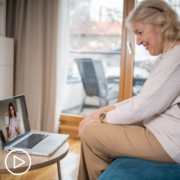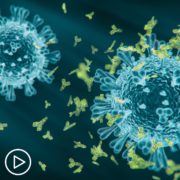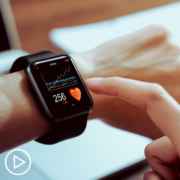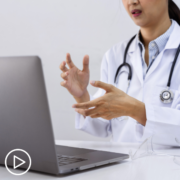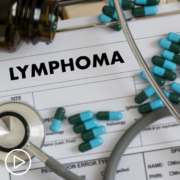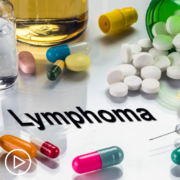Patient Empowerment Network (PEN) is committed to helping educate and empower patients and care partners in the diffuse large B-cell cancer (DLBCL) community. DLBCL treatment options are ever-increasing with research advancements in treatments and testing, and it’s essential for patients and families to educate themselves with health literacy tools and resources on the latest information in DLBCL care. With this goal in mind, PEN kicked off the [ACT]IVATED Diffuse Large B-Cell Lymphoma (DLBCL) program, which aims to inform, empower, and engage patients to stay abreast of up-to-date information in DLBCL care.
The [ACT]IVATED DLBCL program is aimed at newly diagnosed DLBCL patients, yet it can help patients at any stage of disease. The initiative aids patients and care partners stay abreast of the latest options for their DLBCL, provides patient activation tools to help overcome barriers to accessing care, and powerful tips for self-advocacy, coping, and living well with cancer.
Diffuse Large B-Cell Lymphoma Disparities
Clinical trials are the primary way to forge DLBCL research and treatment advancements. Yet Black and Hispanic patients have been subject to clinical trial exclusion criteria at a higher rate than white patients. A recent DLBCL study showed that levels of lab test criteria of platelet count, hemoglobin, neutrophil count, bilirubin, and creatinine was responsible for the exclusion of 24 percent of patients who applied for clinical trial participation. And Hispanic and non-white DLBCL patients were more likely to be excluded from trials based on these lab test values – a clear disparity in DLBCL care.
![Dr. Shah's [ACT]IVATION Tip](https://powerfulpatients.org/wp-content/uploads/Screenshot-2023-08-14-at-10.37.31-AM-1030x550.png)
Access to specialized DLBCL care and clinical trials are important for all patients. Cancer patient Lisa Hatfield interviewed Dr. Nirav Shah, Associate Professor at the Medical College of Wisconsin. He explained about the barriers to care that some patients experience. “…I think that just simple geography is an issue that creates accessibility and impacts the type of care that a patient is able to get. I think beyond that, there are obviously economic factors that drive a patient’s ability to get specialized treatment. Do they have money to afford the gas to get to a larger center? Do they have the resources or the support system available to get a complex therapy where you would need those treatments, especially for relapsed disease? And then I think there are always going to be racial factors and accessibility issues that happen, where patients aren’t referred in time or patients aren’t getting necessarily the best care that they can.”
Solutions for Improved DLBCL Care
Dr. Nirav Shah shared about the impact of clinical trial participation. “We wouldn’t have CAR T if hundreds of patients didn’t go on these clinical trials and be willing to be a subject and go through a treatment that was at the time undefined and without knowing how efficacious it was going to be.…clinical trials are important because without patients participating in clinical trials, how can we do better?”
In order to improve and refine DLBCL treatments, more research must be carried out. Dr. Nirav Shah shared where things stand with DLBCL types and how optimal treatments may be found in the future. “…there’s something called the germinal center phenotype. The other one is called the activated B-cell phenotype and prognostically, these sort of behave differently. Currently, we’re treating them the same, but we’re hoping that in the future, we’ll actually have algorithms that are more refined so that they are giving the best treatment for each subtype.”
“So I know that in the world of diffuse large B-cell lymphoma, we have lots of great treatments, which is the exciting part for me. My biggest concern remains that not all of those treatments are accessible to all the patients that they need them, and I think we all need to do a better job of educating our community, of making people aware that these options are available, and then also facilitating patients who have less money, patients who have less resources to be able to provide them what they need to be able to get the treatments that are best for them.”
Healthcare providers are available to help DLBCL patients. Make sure to ask about a phone number for you or your loved one experiences concerning side effects. Dr. Nirav Shah explained the importance of staying in touch with the care team. “…call us. Let us know what’s going on. We can’t help you with your symptoms if we’re not aware, and we don’t mind those phone calls because we want to help patients through that journey.”
Dr. Shah also shared his perspective about DLBCL treatment advances and how hopeful he is about the future of DLBCL treatment. “…there have just been incredible advances, not just in chemotherapy, but immune therapy and targeted therapy, and so the goal is to keep getting better. I see a future where more and more patients with diffuse large B-cell lymphoma are cured in the front line, and more and more patients are cured in the second line.”
[ACT]IVATED DLBCL Program Resources
The [ACT]IVATED DLBCL program series takes a three-part approach to inform, empower, and engage both the overall DLBCL community and patient groups who experience health disparities. The series includes the following resources:
Though there are DLBCL disparities, patients and care partners can take action to educate themselves to help ensure optimal care. We hope you can take advantage of these valuable resources to assist in your DLBCL care for yourself or for your loved one.
[ACT]IVATION Tip:
By texting EMPOWER to +1-833-213-6657, you can receive personalized support from PENs Empowerment Leads. Whether you’re a DLBCL cancer patient, or caring for someone who is living with it, PEN’s Empowerment Leads will be here for you at every step of your journey. Learn more.







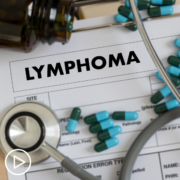

![Dr. Shah's [ACT]IVATION Tip](https://powerfulpatients.org/wp-content/uploads/Screenshot-2023-08-14-at-10.37.31-AM-1030x550.png)
